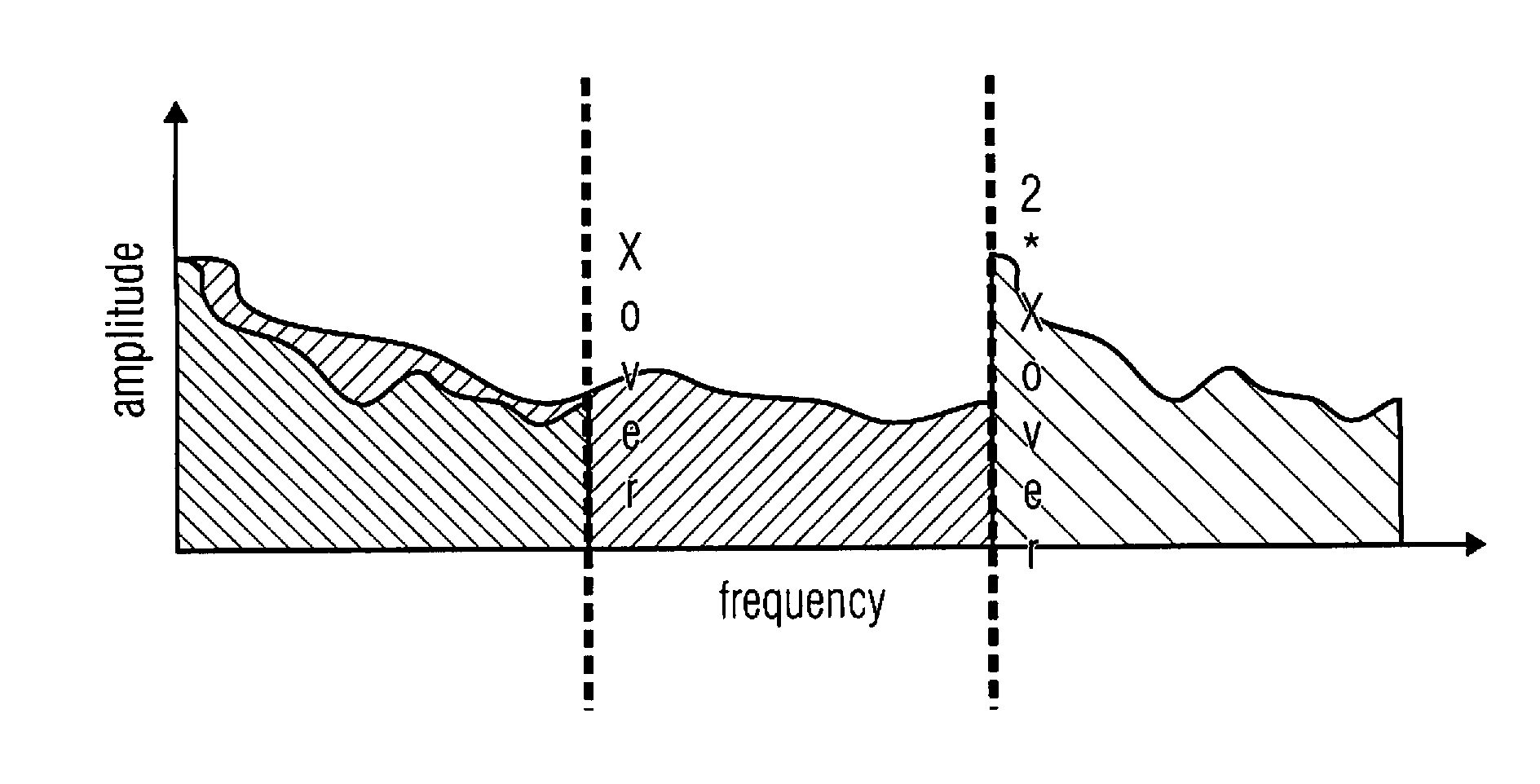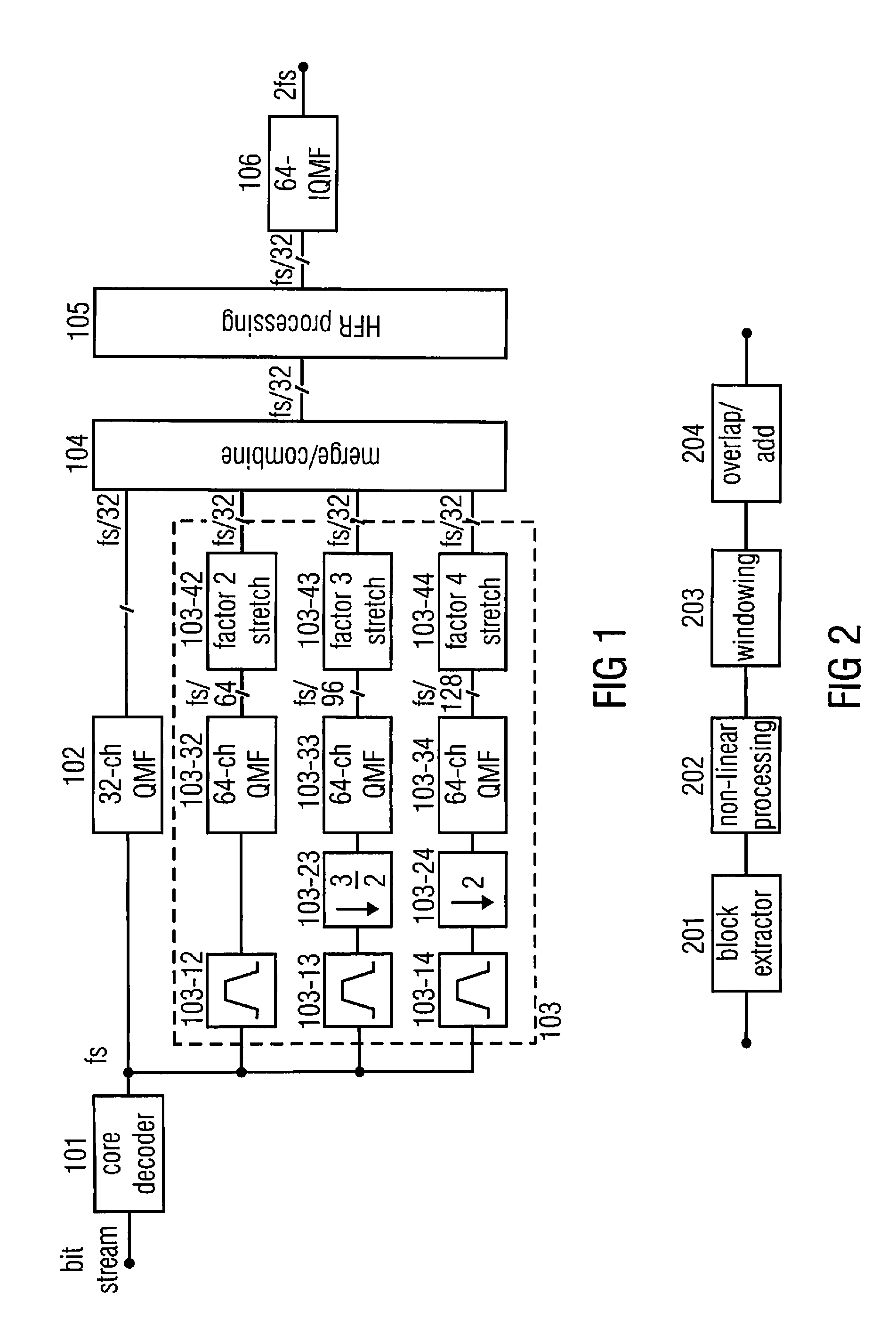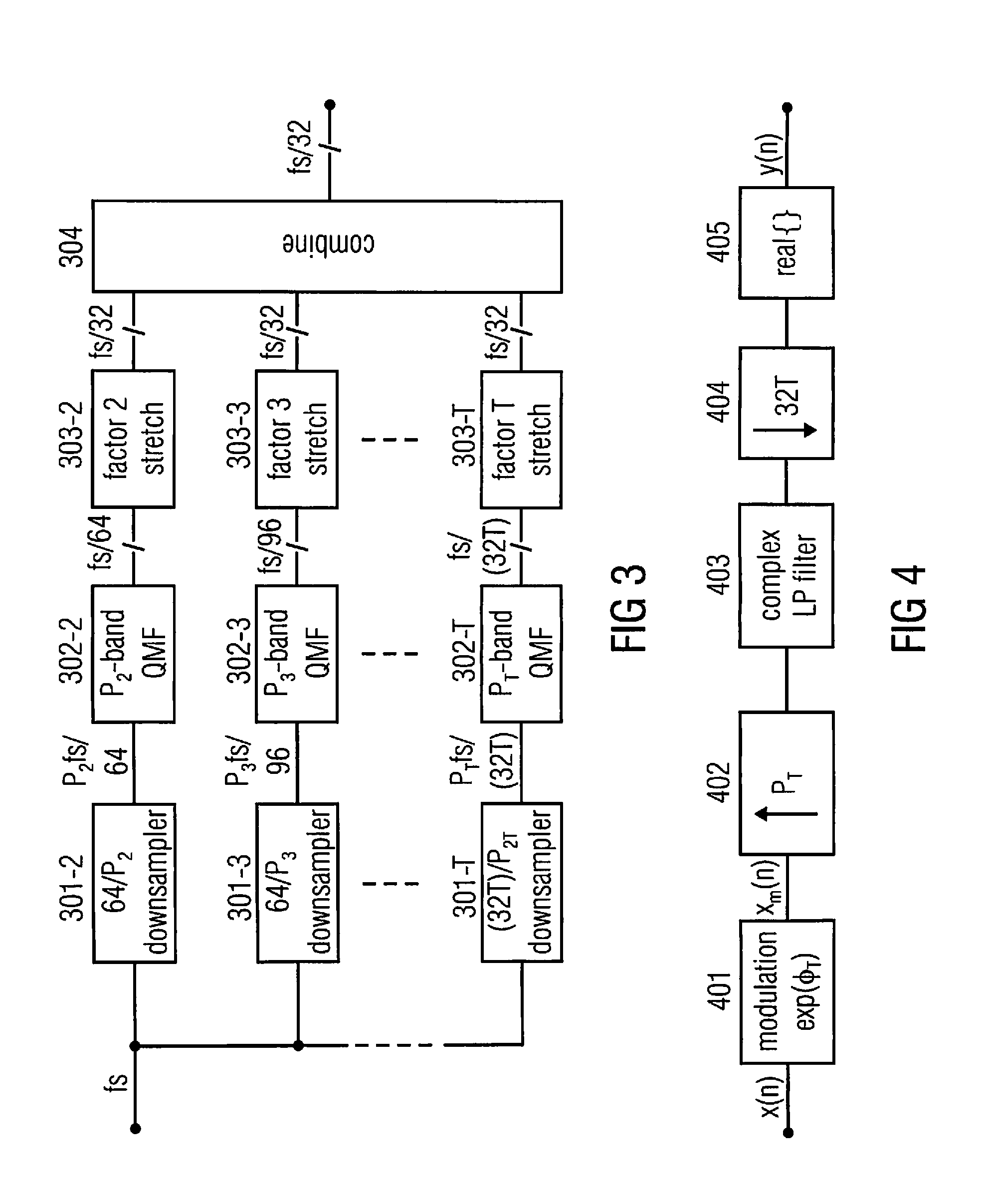Apparatus and method for processing an audio signal using patch border alignment
an audio signal and patch border technology, applied in the field of apparatus and method for processing an audio signal using patch border alignment, can solve the problems of high computational complexity, high complexity, and still much higher complexity than the trivial ssb based hfr method, and achieve efficient time and frequency domain operations, improve audio quality, and reduce complexity
- Summary
- Abstract
- Description
- Claims
- Application Information
AI Technical Summary
Benefits of technology
Problems solved by technology
Method used
Image
Examples
Embodiment Construction
[0064]The below-described embodiments are merely illustrative and may provide a lower complexity of a QMF transposer by efficient time and frequency domain operations, and improved audio quality of both QMF and DFT based harmonic SBR by spectral alignment. It is understood that modifications and variations of the arrangements and the details described herein will be apparent to others skilled in the art. It is the intent, therefore, to be limited only by the scope of the impending patent claims and not by the specific details presented by way of description and explanation of the embodiments herein.
[0065]FIG. 23 illustrates an embodiment of an apparatus for processing an audio signal 2300 to generate a bandwidth extended signal having a high frequency part and a low frequency part using parametric data for the high frequency part, where the parametric data relates to frequency bands of the high frequency part. The apparatus comprises a patch border calculator 2302 for calculating a ...
PUM
 Login to View More
Login to View More Abstract
Description
Claims
Application Information
 Login to View More
Login to View More - R&D
- Intellectual Property
- Life Sciences
- Materials
- Tech Scout
- Unparalleled Data Quality
- Higher Quality Content
- 60% Fewer Hallucinations
Browse by: Latest US Patents, China's latest patents, Technical Efficacy Thesaurus, Application Domain, Technology Topic, Popular Technical Reports.
© 2025 PatSnap. All rights reserved.Legal|Privacy policy|Modern Slavery Act Transparency Statement|Sitemap|About US| Contact US: help@patsnap.com



